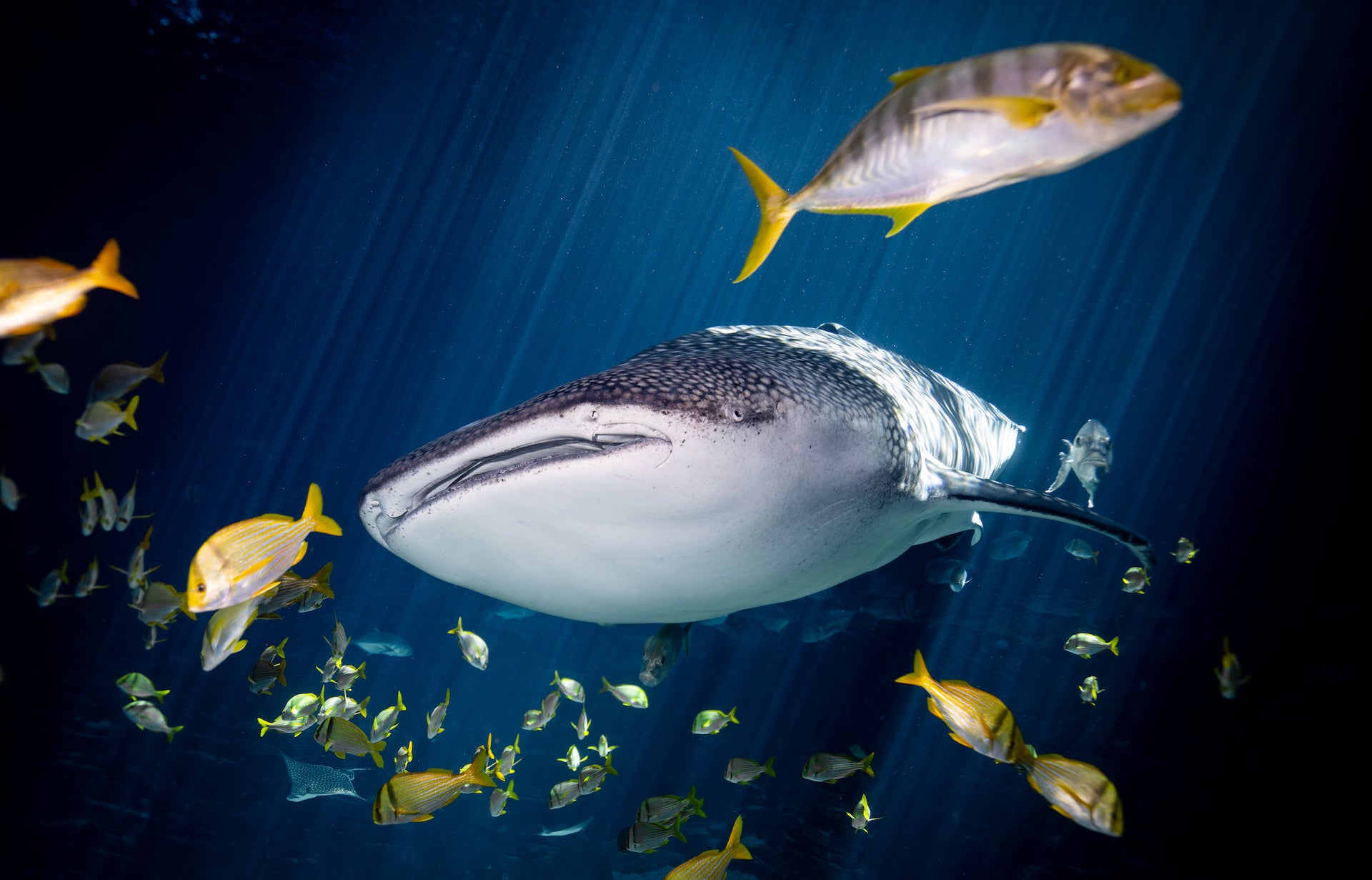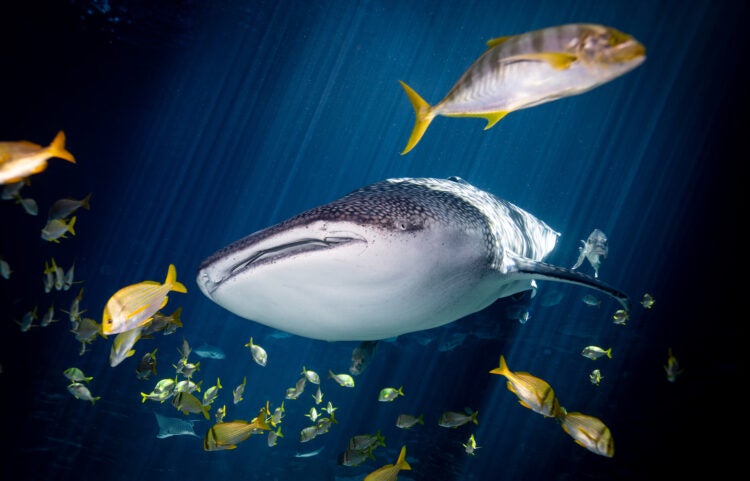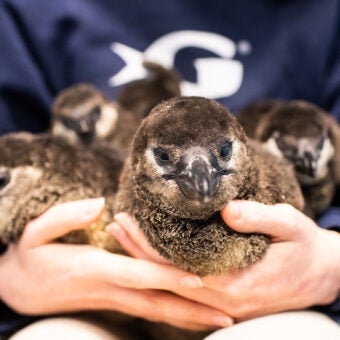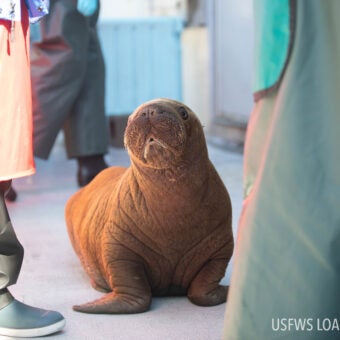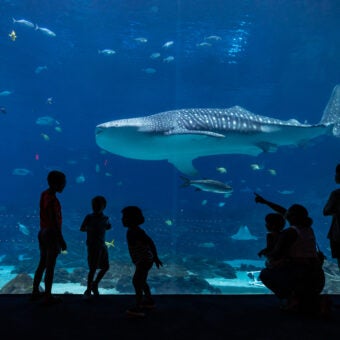Millions of visitors gaze, transfixed, by Georgia Aquarium’s massive whale sharks slowly cruising through their Ocean Voyager home – but few know that these gentle giants are also helping solve the biggest mysteries about their little-known species.
Since whale sharks came to the Aquarium in 2005, veterinary staff and researchers have studied them daily as expert aquarists provide the care needed for them to thrive. Here are just some of the critical data scientists have learned from caring for Georgia Aquarium’s whale sharks:
Safe, effective blood draws:
As with people, sharks’ bloodwork provides important health information. Blood draw expertise developed at the Aquarium helped create the first successful health assessments of free-ranging whale sharks. This has taught us about their exposure to pollutants, nutrition needs, health, and overall well-being. Knowledge from this data has helped us to understand this species so we can better protect them.
Just how big are they?
Whale sharks’ body size and mass reveal their age, sexual maturity, and other important details that help conservationists. But it’s hard to get those measurements as they plow through the open ocean. In the Aquarium, scientists are able to work on perfecting accurate measurement techniques that will be used in the ocean.
Genome mapping:
Georgia Aquarium, Georgia Institute of Technology, and Emory University completed the first-ever shark genome map, using detailed blood chemistry and DNA from our sharks. This genetic blueprint helps scientists understand diseases and treatments for whale sharks.
Babies:
We know very little about how whale sharks breed, and no birth has ever been recorded. The birthing process is mysterious, with females keeping to themselves. But their numbers have fallen sharply in recent years – so every pup born really matters. Georgia Aquarium doesn’t breed whale sharks, but its researchers study their reproductive behavior to influence fieldwork. A recent partnership that performed ultrasound tests in the Galapagos Islands discovered that, surprisingly, big-bellied females weren’t pregnant at all. Learning more about breeding behavior will help scientists discover where they go to give birth to their pups, so those areas can be protected.
Lessons after loss:
Researchers learn a wealth from whale sharks during their life, and even after their death. Our whale sharks continue to help researchers piece together the life history of this species, even after their passing. Researchers conducted necropsies revealing incredible insights about their reproductive systems, ages, and sexual maturity. This data is something that hasn’t been seen before and is nearly impossible to collect outside of an aquarium setting.
What’s that smell? Dinner!
As filter-feeders that eat only plankton and small fish or shrimp, whale sharks don’t have the complex brains needed by other shark species that hunt large prey. But studies at Georgia Aquarium show they do have a well-developed sense of smell, which triggers them to forage and eat. Such nuggets of information help conservationists working to protect ocean food supplies.
Saving this special species:
Using what’s been learned here, Georgia Aquarium and its partners have studied and tracked more than 1,000 whale sharks around the world via satellite tags, aerial surveys, acoustic receivers, and photo identification software, from Mexico to the Galapagos Islands, Indonesia, St. Helena Island, and Taiwan.
The things learned from these gentle giants in their aquarium home are helping paint a vibrant picture of how they behave, what they eat, where they migrate and more – including how we can make sure they’ll still be cruising oceans for a long time into the future.


